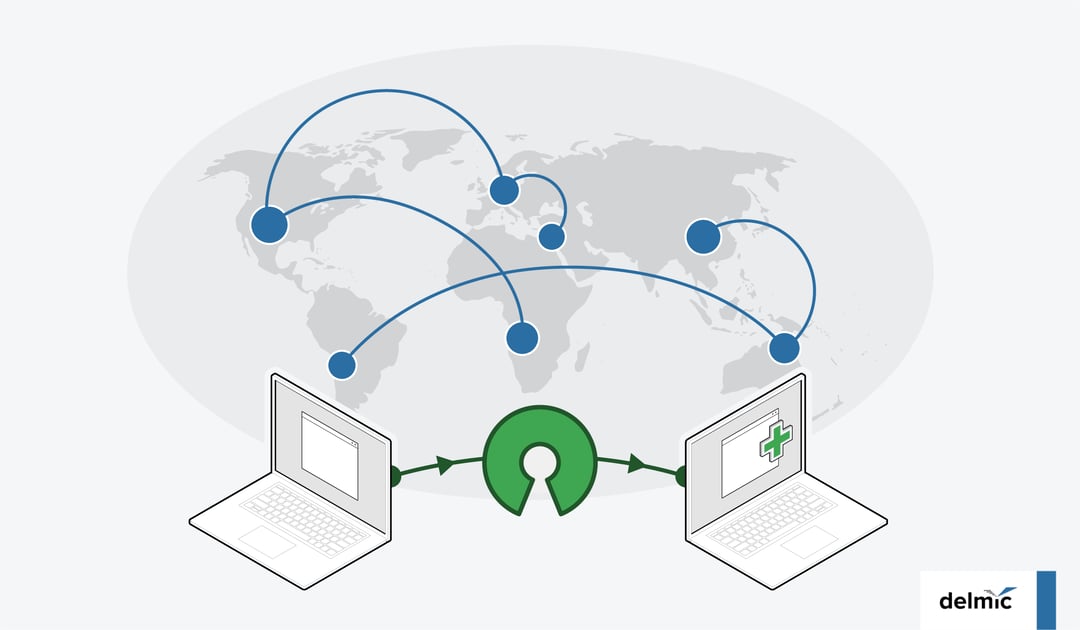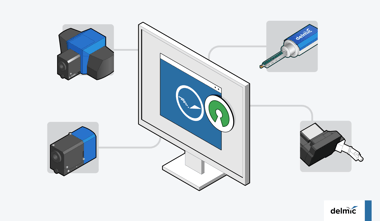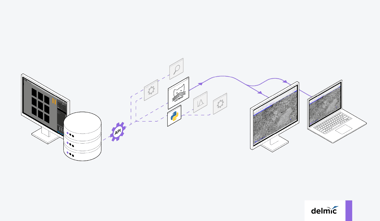When using an electron microscope, software is crucial for acquiring and analyzing images. Dedicated software ensures that images are acquired with the highest possible signal-to-noise ratio (SNR). In pre-processing steps, the software calibrates the electron microscope, ensuring that good quality images can be taken. The user then determines what images they want, and alter a wide range of settings to optimize the outcome. After initial image acquisition, the software can often also be used to stitch together overview images from smaller images, remove artifacts, and more.
The software of an electron microscopy tool can be ‘proprietary’ (also known as ‘closed source’) or ‘open source’. When using proprietary acquisition software, the users are not permitted to share or alter the software [1]. Under strict licenses, the users have to state that they will only use the software the way in which is permitted by the authors. They can only use it the way in which it is presented, and can’t access the so-called ‘source code’. This can be compared to having a car, but not having permission to look under the hood to see how it exactly works.
On the other hand, when software is open source, the authors make the source code available to the users.
The users are allowed to study and modify the source code, share the software, and use the software for any purpose. A common misconception is that open source software is always license free or free of charge. This is not always the case, and users still need to comply with the terms in the license. So what are the advantages of open source acquisition software?
Customizable for your research
One of the main advantages of open source software is that the source code is available for the user. Users can look ‘under the hood’, understand how the software works, change it to their needs, and add for example python script to the code easily. This is especially important for researchers working with electron microscopes, since different samples require distinct imaging settings and analysis methods. By editing and adding to the software, researchers can automate their image acquisition pipeline, and make their research stand out by gaining unique insights into their samples.
Stable and secure
A company often chooses an open source license for their software, so that they can use other open source software as well. This means that the software is continuously shared and edited by a large community of contributors, who can then learn from each other, and improve both each other's and their own software. As a consequence, the software is often more stable and secure [2]. This process of continuous improvement is especially important for the rapidly-evolving field of electron microscopy, since the software also needs to improve rapidly. Open source software is also more stable over time, since older versions of the software will not suddenly disappear when the creators stop using it.
Replicable science
A major principle underpinning the scientific method is that experiments should always be replicable and verifiable. The electron microscopy workflow should therefore also be replicable, including the way in which the images are processed and analyzed with the software. However, when proprietary software is used, the image processing steps can't easily be replicated by other scientists. This makes the scientific conclusions hard to verify, and science not as transparent and open as it should be. It also hampers scientific progression in general, as scientists can't fully understand and build upon what has already been done.
Practical
Are you having trouble finding the security key for your software? Is your license expired after a few years, and do you have to spend time trying to upgrade it? These small practical inconveniences are other reasons why researchers choose open source software. When using open source software, the license is acquired only once, so it saves you from these practical problems later on. You can freely update your software as well to stay up to date with the latest version of the software.
Although the advantages of open source software are abundant, many companies still only provide proprietary software, and keep the source code hidden from the users. However, when software users start prioritizing open source software, companies have no choice but to follow this trend. Especially for the field of electron microscopy, where software is an integral part of the microscope, moving towards a future of open source and transparent software starts with users making it one of their top priorities. Would you choose open source software next time?
References
- https://opensource.com/resources/what-open-source
- Richard Kemp, Computer Law & Security Review, 25 (6), 569-582, (2009)
.png)







